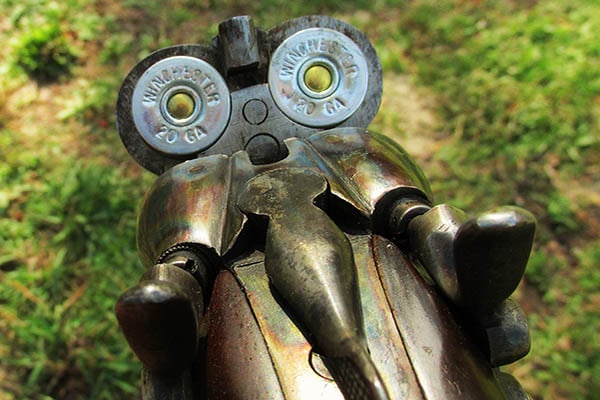
Last Updated on
“A gun without hammers is like a spaniel without ears.” King George V said circa 1920 in reference to the modern shotgun. No doubt the look of a double gun with hammers is breathtaking. The curves of the hammer, the sound of the cocking and the slap of the hammer against the firing pin all add to the mystique. Sadly to some degree, with the advent of the hammerless gun, those with adorning and functional hammers have faded from the hunting scene like tweed jackets and neck ties. True we still have tweed and neckties are still holding on in many circles. But the hammer gun is a distant memory except for the custom firearms that cost as much as some houses.
In the early 1900’s the need for an affordable shotgun was noticed by H. & D. Folsom Arms Company of New York. They began manufacturing a brand of shotguns that was later referred to as “The American Gun Company.” These mass produced shotguns, in 12 and 20 gauge, were available with hammers and without to appeal to the traditionalist and to the modern gun buyer. For the most part these guns were available at every local hardware store and at a very affordable price. In 1918 the American Gun Company 12 gauge shotgun with hammers sold for $12.00 ($188 in today’s dollars). The gun without hammers was a few dollars more and the 20 gauge sold for $16.00 ($251 in today’s dollars). Available in five grades, the most expensive topped out at $25.00 or ($400 today). These guns were so affordable and so reliable they sold gazillions of them. Until the late 1930’s when the American Gun Company was purchased by Remington arms and shut down.
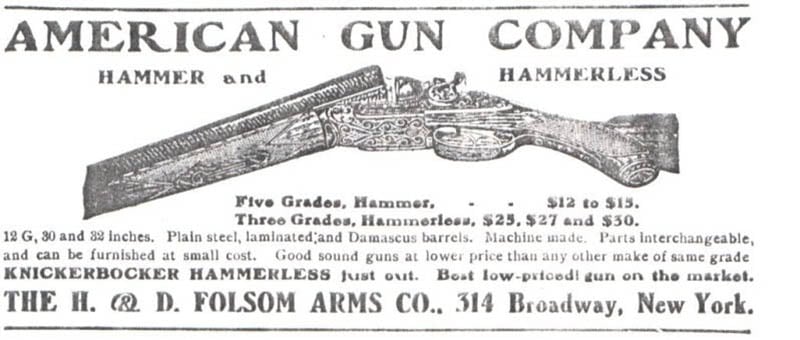
Most gun manufacturers produced hammer guns until around the turn of the century. Holland and Holland, Parker, L.C. Smith, Foxx all made high quality hammer guns in all popular gauges. But few made guns the average American could afford. With the popularization of the hammerless guns, the manufacturer of hammer guns faded into history. With the exception of some high end custom guns and replicas, the hammer gun is all but extinct.
Many of the American Gun Works guns are still around, and according to my local gunsmith, “I’ll see one of these guns every three or four years but they are seldom in working condition.” Which makes my 20 gauge all the more treasured. While it does not carry the value of some of the finer guns mentioned earlier. Its value is more in its look, and the travels it was on before landing in my hands.
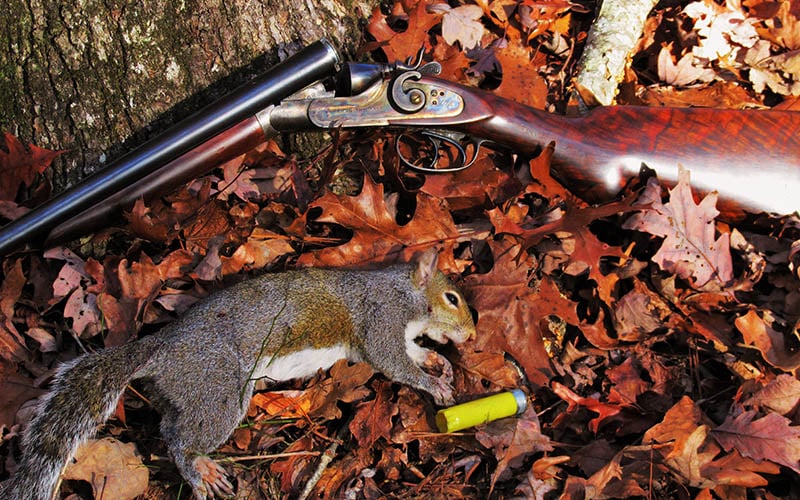
People come into guns a variety of ways. We seek them out, we rummage around and find them, some are gifted and others bequeathed. Of the guns that find their way to our possession, a few find a special place in our gun racks. The ones we inherited from parents or grandparents. The one we bought with money saved from our first job. The ones we lusted over for a few years before we finally saved enough to get.
Then there are the ones that were given by special friends. For really no reason, one day while discussing guns in general the conversation turns to something someone wants. Just then, he gets up from his chair, opens his gun safe and says, “Here, why don’t you take this and use it?”
Similar to King George V, I tend to feel that a shotgun is as much beauty as it is function. The act of pulling the trigger is what makes the gun do what it is designed to do from an engineering standpoint. But the beauty is not only in its reliability, it is in its craftsmanship. The beauty is in the fine lines and tight tolerances. The shape of the screws. The beauty is found in the checkering, not perfect, but hand carved to provide more than grip. Worn bluing that shows years of treasured wear. A nick here, a scratch there, all are memories of times afield chasing birds, rabbits or similar game.
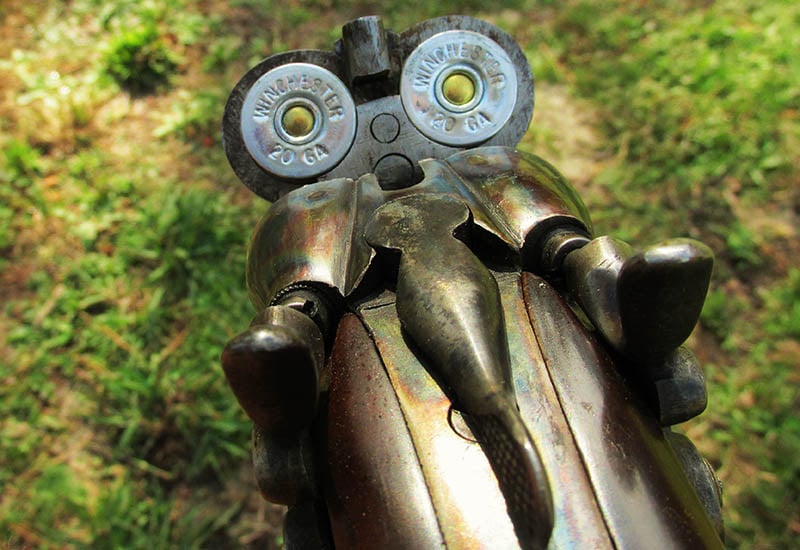
When I pick up a hammer gun, I feel the gun. I don’t just hold the gun, I hold history. I hold something someone years before saved and scrimped to buy as a way of feeding his family. I hold someone’s hope, someone’s future, and someone’s past. But when I hold my hammer gun, I hold onto a memory of sorts.
The side of my gun holds some etched initials, “L. T. A.” and I have to wonder who took the time to etch his initials into the side lock of this gun. Was it an old farmer who stored it above the door for emergencies? Could it have been a merchant who kept it in a closet for weekend jaunts into the back coverts? Or perhaps an elite business man who needed a “field gun” for when he hunted for fun and food and not to impress his customers. Regardless of who owned it first, I was third in line. My dear friend Walter got the gun from a co-worker who needed some cash. Being the type, Walter gave him the cash and kept the collateral. Now some twenty years later, the gun rests in his gun safe. Until we got together.
Walter and I have been friends for going on two decades. Although he was twenty five years my senior, we had a friendship many can only hope for. While visiting him at home in his hospice bed, he brought up the 20 gauge hammer gun. We discussed its heritage, its functionality and its usefulness. I explained to Walter, its usefulness pales in comparison to the fact that it was his. Giving me the combination to his safe, he asked for me to get the “old hammer gun.” Cradling the gun as I walked into his room. I noticed he was resting. The sound of oxygen machines, labored breathing and the sight of my dear friend was overwhelming. Opening his eyes, he grinned and reached out his hands to hold his gun once more.
Taking his tired old hands, they slid across the stock as visions of grouse, chucker and pheasant crept from distant memory to recent recollection. His face cracked a small smile, as his eyes met mine.
“Here, it’s yours now.” He said stretching the gun out towards me.
“I can’t take your gun Walter,” I said pleading.
“You ain’t taking it, Hell, I’m giving it to you!”
“I will take good care of it.” I said as I took the gun from his tired hands.
“I know you will, just keep it, use it and then one day give it to your son.”
“I will keep it in the family.” I promised.
A few days later, Walter slipped into that place we all hope for and dream of. Where twenty bird coveys are around every bush, and thirty inch mule deer roam free, and Salmon and Steelhead are abundant and limits are ignored.
There are few things Walter enjoyed more than hunting the eastern grey squirrel. It is where he cut his teeth in the woods, and where I too learned to appreciate the joy of hunting. What finer place to take the old hammer gun than into the woods abundant with grey squirrels.
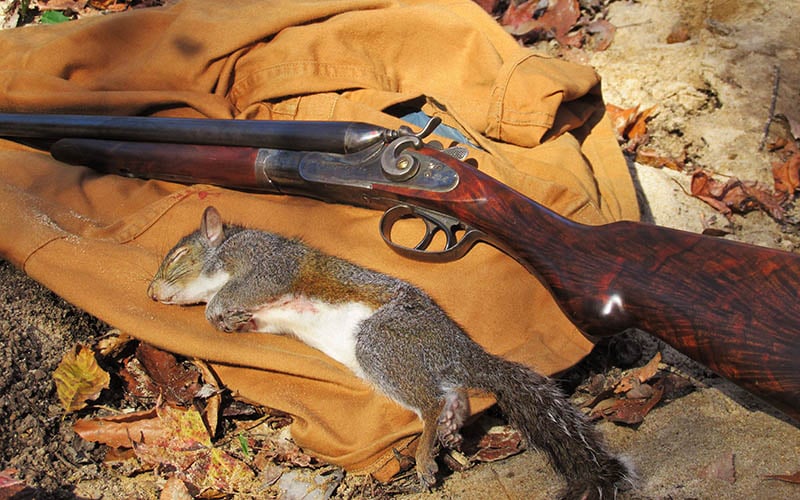
Loaded with some low brass number 8, my son and I went to spend the day hunting squirrels and reminiscing of Walter and the old Hammer Gun, now approaching its 100th birthday. The hammer gun fired flawlessly. Carrying a left barrel of Modified and a right of full, the range is pleasing. Fine cracking in its stock will need some mending, but the action is sweet, the triggers fair and the sight picture true. For those who have never fired a side by side, it is a joy to raise to your cheek and peer at not one but two barrels. Manually removing the shells is reminiscent of days long gone when men hunted for dinner and sport. When gentlemen gathered and set off pointers and setters for evening hunts. When the back forty held game of all sorts and responsible sporting was not only admired but expected.
Hammer guns have a mystique that enables the shooter or hunter to enter into a time when the glory of hunting was in its heyday. When function and beauty were hand and hand. Craftsmanship meant something to the builder and the buyer. Today’s guns focus on function rather than craftsmanship. Guns dipped in camouflage depict usefulness rather than craftsmanship. Thankfully there are a few companies that still manufacturer fine guns that are reasonable affordable. If given the chance to own a classic hammer gun, jump at the chance to own a piece of Americana.




Leave a Reply